Charleston, SC
Weather Forecast Office
Hurricane Dorian tracked northward off the Georgia coast and then north-northeast just off the South Carolina coast on September 4-5 while intensifying to a Category 3 hurricane with maximum sustained winds near 115 mph (see loop of the Weather Prediction Center's surface analyses below). In fact, the storm moved directly over Buoy 41004 as evidenced by this plot of winds and pressure. The storm caused sustained tropical storm force winds, hurricane force wind gusts, heavy rain and some coastal flooding, especially near the SC coast. Check out our Post-Storm Report which includes meteorological statistics and impacts across southeast SC/GA.



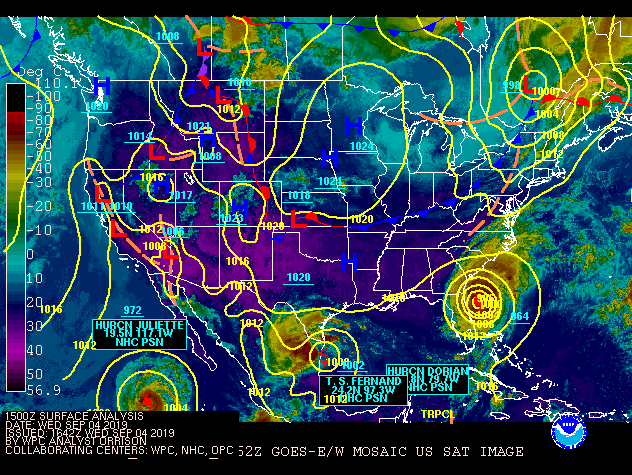

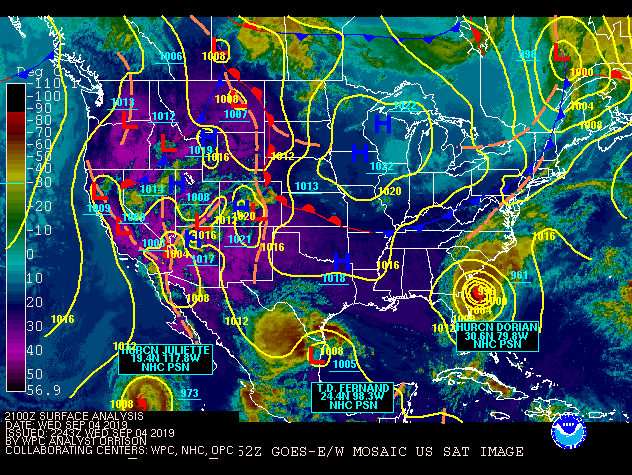



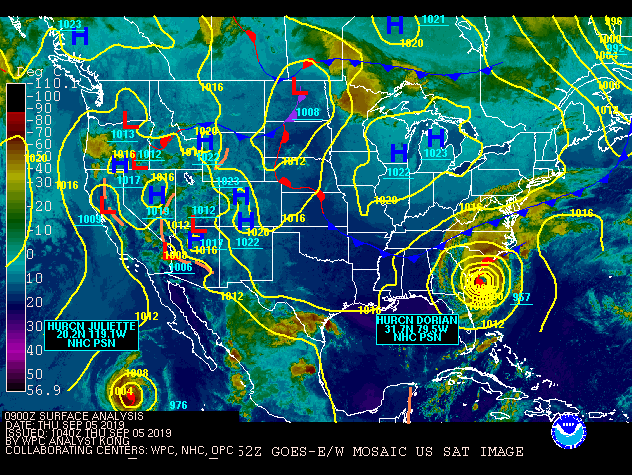
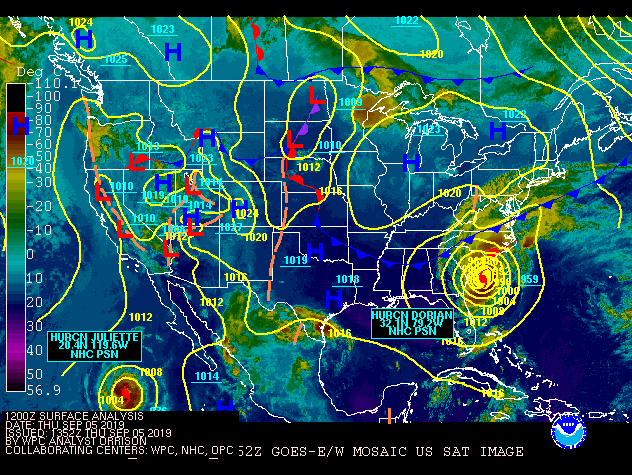



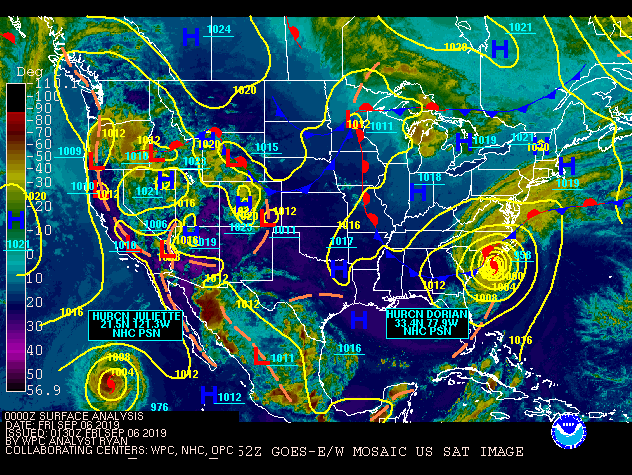

Click on image to enlarge the image and access a listing of wind gust reports
For a map of wind reports across SC, click here.
Click on image to enlarge it and access a listing of rainfall reports
For a map of rain reports across SC, click here. Click here for a rainfall analysis from the NWS Weather Prediction Center.
Peak storm surges (i.e., water levels above the astronomical tide) at the Charleston and Fort Pulaski tide gauges were 3 to 3.5 feet. However, storm tides (i.e, combination of astronomical tide and storm surge) were not high enough to produce significant coastal flooding since the peak surge occurred closer to low astronomical tide. Click here for a map showing peak tide levels along the U.S. East Coast. Water level data collected by the U.S. Geological Survey can be found here.
Click on the map above or this link for a list of storm reports
Many trees and power lines fell across the area, mainly near the coast.
Hurricane Dorian Twitter Moment
Hazards
Hazardous Weather Outlook
Graphical Outlook
One-Stop Briefing Page
Latest Weather Briefing
Local Storm Reports
Forecasts
Local Forecasts
Graphical
Weather Activity Planner
Forecaster Discussion
Aviation
Beach
Fire Weather
Lake Moultrie
Marine/Tides
Rivers
Winter
Heat
Wet Bulb Globe Temperature
Past Weather
Observed Weather
Climate Data/Plots
Observed Rainfall
Event Summaries
Today in Weather History
Coastal Flood Event Database
Local Tropical Cyclone History
Tropical Cyclone Reports
US Dept of Commerce
National Oceanic and Atmospheric Administration
National Weather Service
Charleston, SC
5777 South Aviation Avenue
North Charleston, SC 29406-6162
(843) 747-5860
Comments? Questions? Please Contact Us.


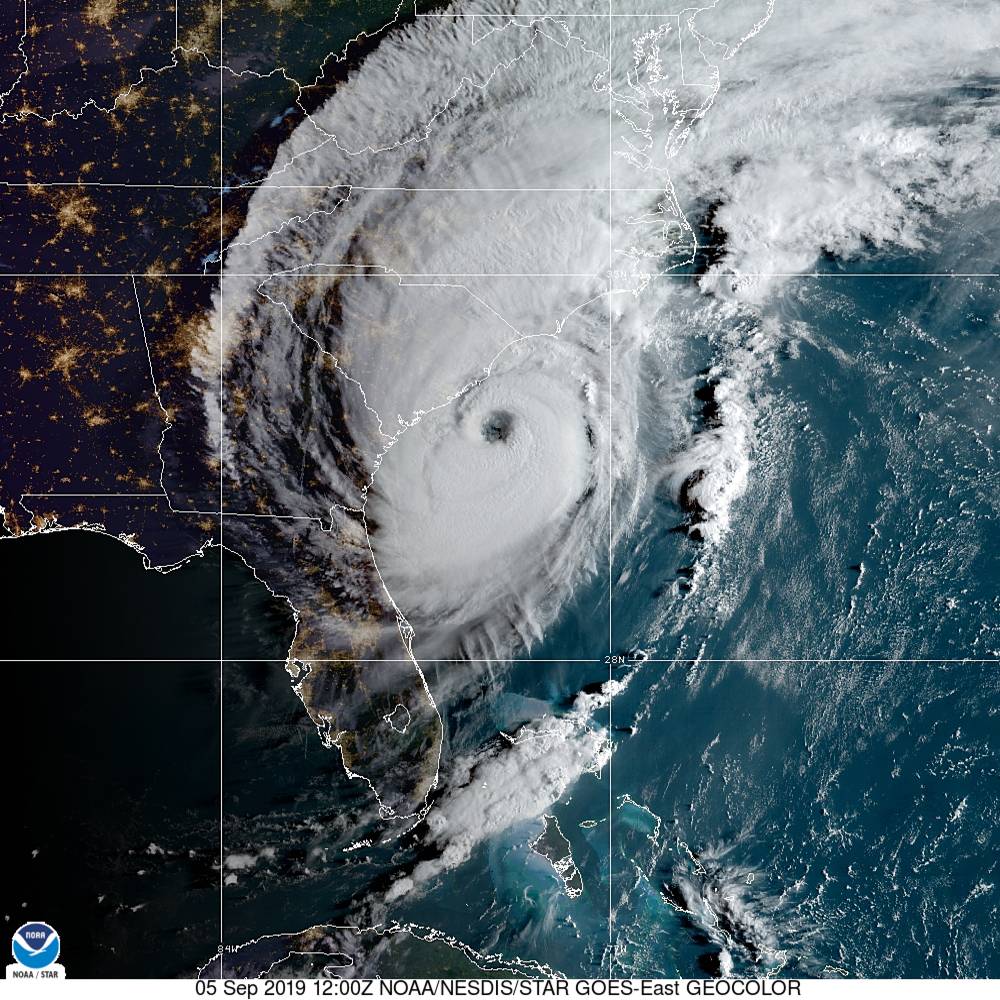



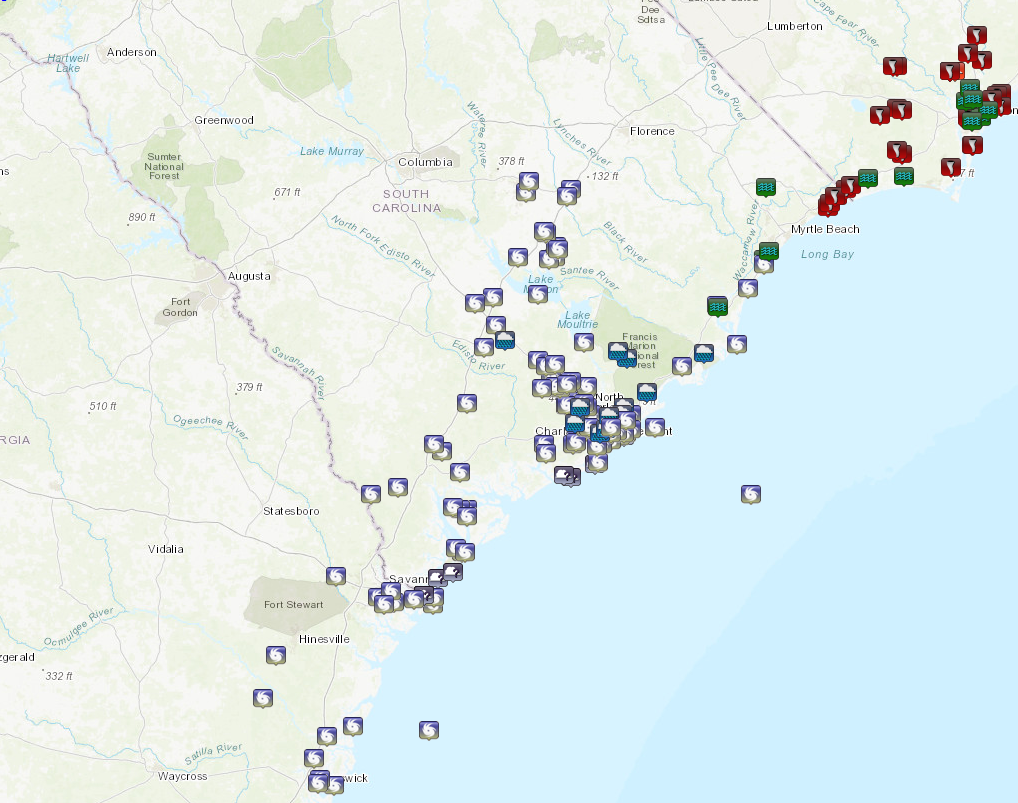
 Coastal Flood
Coastal Flood